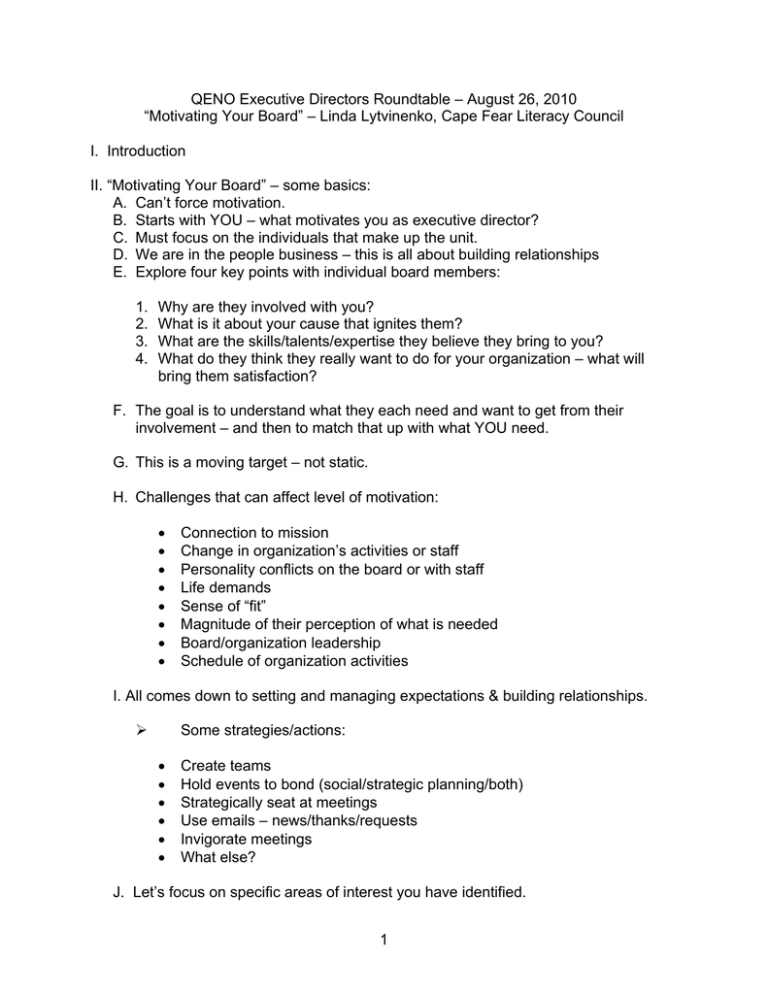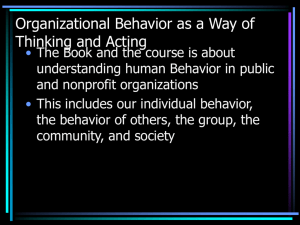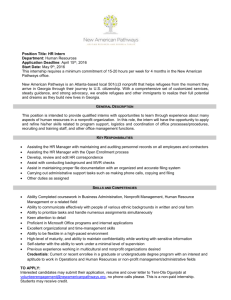QENO Executive Directors Roundtable – August 26, 2010
advertisement

QENO Executive Directors Roundtable – August 26, 2010 “Motivating Your Board” – Linda Lytvinenko, Cape Fear Literacy Council I. Introduction II. “Motivating Your Board” – some basics: A. Can’t force motivation. B. Starts with YOU – what motivates you as executive director? C. Must focus on the individuals that make up the unit. D. We are in the people business – this is all about building relationships E. Explore four key points with individual board members: 1. 2. 3. 4. Why are they involved with you? What is it about your cause that ignites them? What are the skills/talents/expertise they believe they bring to you? What do they think they really want to do for your organization – what will bring them satisfaction? F. The goal is to understand what they each need and want to get from their involvement – and then to match that up with what YOU need. G. This is a moving target – not static. H. Challenges that can affect level of motivation: • • • • • • • • Connection to mission Change in organization’s activities or staff Personality conflicts on the board or with staff Life demands Sense of “fit” Magnitude of their perception of what is needed Board/organization leadership Schedule of organization activities I. All comes down to setting and managing expectations & building relationships. ¾ Some strategies/actions: • • • • • • Create teams Hold events to bond (social/strategic planning/both) Strategically seat at meetings Use emails – news/thanks/requests Invigorate meetings What else? J. Let’s focus on specific areas of interest you have identified. 1 Details from research on why people volunteer, join nonprofit boards. ÎWhy do people volunteer? Volunteer Center, Ottawa, Canada, 1992: 7 categories of why people volunteer: • • • • • • • Personal achievement (achieve results, meet challenges) Recognition and feedback Personal growth (new skills; learn about self) Giving something back Bringing about social change Family ties Friendship, support, bonding, feeling of belonging ÎWhy do people join non-profit boards? Six motivating components: • • • • • • enhancement of self-worth learning through community helping the community developing individual relationships unique contributions to the board self healing. (Cleave, S., & Inglis, S. (2006). A Scale to Assess Board Members Motivations in Nonprofit Organizations. Nonprofit Management & Leadership) ____________________________________________________________________ Some online resources: 1. www.forgrantwritersonly.com Get Motivated! Understanding the Motivations of Your Board, Staff, and Volunteers, Your Donors, and Yourself 2. http://cortcom.blogspot.com/2010/05/eds-and-board-building-motivating.html ED’s and Board Building: Motivating Action vs. Chiding Inaction 2 Ten strategies you can implement at your next board meeting to shake things up! From Liz Vibber, Strategic Consultant with the Bucks County Center for Nonprofit Management. With more than twenty years of marketing and consulting experience with nonprofit organizations, her knowledge and insight have assisted numerous nonprofit organizations in achieving their missions. http://www.buckscountynonprofit.com 1. Have your Mission and Vision statement on every Agenda. 2. Start each meeting with a Member Minute where each board member spends a minute explaining what they have done since the last meeting to serve the organization: secured a donation, made an important contact, shared an article, etc. 3. Introduce a By-law amendment that limits the number of other boards your members can serve on 4. Create a 'Face page" for each of your members in your board manual-this is a personal profile that includes hobbies and connections. 5. Use a DA or Devil's Advocate card at each board meeting. Each meeting someone different is given the card and their job is to play the devil's advocate on issues before the board. 6. Create a FAQ for new board members created by current and past members. 7. Make sure all of your board members have business cards with the organization's mission statement on the back. 8. Decrease the number of your committees and increase the number of your task groups. 9. Create a strategic plan dashboard tracking 3-5 critical indicators to the health of the organization and update monthly showing a 12 month trend for each. 10. Ask each board member to think of the single most important issue that they feel the organization should focus on in the next year and have them write it on an index card. Shuffle the cards and read them out loud to begin a strategic discussion. 3




